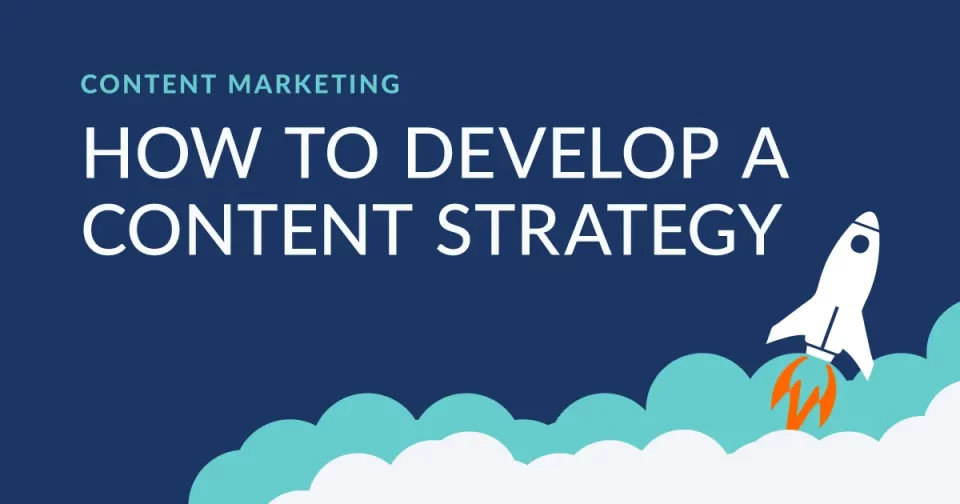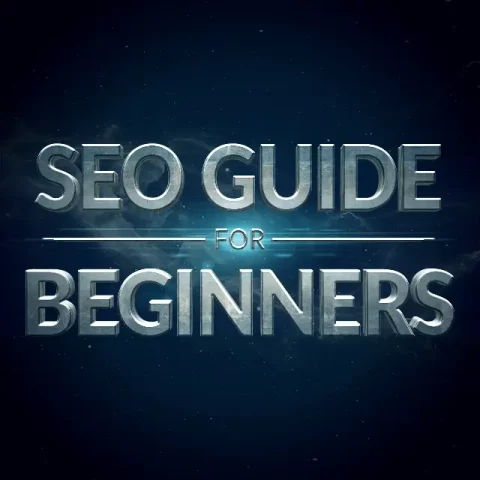
In a previous article, we walked through what is content marketing, and outlined 5 steps to effective content marketing. As an entrepreneur or small business person, you understand the importance of content marketing in growing your brand and attracting customers. Developing a solid content strategy is the foundation of a successful marketing campaign. In this comprehensive guide, I’ll walk you through the process of creating an effective content strategy that aligns with your business goals and engages your target audience. Whether you’re new to content marketing or looking to refine your existing strategy, this post will provide you with the essential steps and insights you need to succeed.

Why Is a Content Strategy Important?
Before we delve into the nitty-gritty of developing a content strategy, let’s first understand why it is crucial for your business. But first, consider that a CMI poll of marketers found that 67% reported that content marketing generates more leads, 72% offered that content marketing helped educate their audience, and 63% said that it helps build loyalty with existing customers.
With that, let’s look at why a well-defined content strategy is important:
- Establishes a Clear Direction: A content strategy provides a roadmap for your marketing efforts, ensuring that every piece of content you create aligns with your overall business goals.
- Targets the Right Audience: By defining your target audience and understanding their needs, a content strategy helps you tailor your content to reach the right people, increasing your chances of conversion.
- Builds Brand Authority: Consistent, valuable content helps position your brand as an authority in your industry, building trust and credibility with your audience.
- Enhances Search Engine Visibility: A strategic approach to content creation improves your search engine optimization (SEO) efforts, helping your website rank higher in search engine results.

10 Steps To Developing Your Content Strategy
Step 1: Define Your Goals and Objectives
Before you start creating content, it’s important to establish clear goals and objectives that align with your overall business vision. Some common content marketing goals include:
- Increasing brand awareness
- Generating leads
- Driving website traffic
- Boosting customer engagement
- Educating and informing your audience
By setting specific, measurable, attainable, relevant, and time-bound (SMART) goals, you’ll have a clear focus and benchmarks for success.
Step 2: Understand Your Target Audience
To create content that resonates with your audience, you must first understand their needs, preferences, and pain points. Conduct market research and create buyer personas that represent your ideal customers. Consider factors such as demographics, interests, challenges, and preferred communication channels. This information will guide your content creation process and help you deliver valuable, targeted content.
Step 3: Conduct a Content Audit
If you’ve been creating content for some time, conducting a content audit is essential to assess what’s working and what needs improvement. Review your existing content, analyze metrics such as engagement, social shares, and conversions, and identify gaps or areas of opportunity. This audit will help you refine your content strategy and align it with your goals and audience’s preferences.
Step 4: Develop Your Content Pillars
Content pillars are the core themes or topics that your content will revolve around. They represent your expertise and the areas that resonate most with your audience. Choose a few broad content pillars that align with your brand and are relevant to your target audience. For example, if you’re a fitness coach, your content pillars could be nutrition, workouts, and mindset. These pillars will guide your content creation and ensure consistency across your marketing efforts.
Step 5: Brainstorm Content Ideas
Now that you have your content pillars, it’s time to brainstorm specific content ideas. Consider the types of content that would resonate with your audience, such as blog posts, videos, infographics, podcasts, or social media posts. Think about the questions your audience frequently asks, the problems they face, and the solutions you can provide. Use tools like keyword research or social listening to identify trending topics and popular keywords that can inspire your content ideas.
Step 6: Create a Content Calendar
A content calendar is a crucial tool for organizing and planning your content production and distribution. It helps you stay consistent, maintain a steady flow of content, and ensures that your content aligns with your marketing objectives. Consider the frequency of your content creation, the platforms you’ll be using, and any upcoming events or campaigns that you want to align your content with. A content calendar will keep you on track and help you deliver content consistently.
Content Calendar Example:
| Date | Content Topic | Content Type | Distribution Channels |
|---|---|---|---|
| 01/06/2023 | “5 Essential SEO Tips” | Blog Post | Website, Social Media |
| 07/06/2023 | “Video: How to Use Product” | Video | YouTube, Website |
| 15/06/2023 | “Infographic: Benefits of X” | Infographic | Website, Social Media |
As a bonus tip, consider adding other columns to your content calendar that would help provide an overview of intent. Examples of helpful references to keep you on track include funnel stage, keywords, call to action, and performance metrics.
Step 7: Create Engaging and Valuable Content
Now it’s time to put your content strategy into action and start creating content. Keep these tips in mind:
- Craft attention-grabbing headlines that pique curiosity and encourage clicks.
- Use storytelling techniques to engage your audience and make your content relatable.
- Provide valuable information, insights, and solutions to your audience’s pain points.
- Incorporate visual elements such as images, videos, or infographics to enhance the visual appeal and shareability of your content.
- Optimize your content for readability by using subheadings, bullet points, and concise paragraphs.
Step 8: Promote and Distribute Your Content
Creating great content is only half the battle. To maximize its reach and impact, you need to promote and distribute it effectively. Consider the following channels and tactics:
- Social media: Share your content across relevant social media platforms, engage with your audience, and leverage paid advertising if it aligns with your strategy.
- Email marketing: Build an email list and send regular newsletters or updates to keep your audience informed and engaged.
- Influencer collaborations: Collaborate with influencers or industry experts who have a strong following and align with your brand values.
- Guest posting: Write guest posts for reputable publications in your industry to expand your reach and build authority.
Step 9: Measure and Analyze Performance
To evaluate the success of your content strategy, track and analyze key performance indicators (KPIs) aligned with your goals. Some metrics to consider include website traffic, engagement metrics (likes, shares, comments), conversion rates, and social media analytics. Use web analytics tools, social media insights, and other tracking mechanisms to gain insights into your content’s performance. Based on the data, identify what’s working well and areas for improvement, allowing you to refine your strategy for better results.
Step 10: Iterate and Optimize
A content strategy is not set in stone. As you gain insights from data analysis and audience feedback, continuously iterate and optimize your approach. Stay up to date with industry trends and adjust your strategy accordingly. Experiment with new content formats, platforms, or distribution channels to stay ahead of the competition and keep your audience engaged.

By following these steps and consistently delivering valuable content, you’ll develop a content strategy that drives brand awareness, engages your target audience, and ultimately helps you achieve your business goals. Remember, content marketing is a long-term game, so stay persistent and adapt to the ever-changing landscape.
Tips and Tricks
Here are some additional tips and tricks to enhance your content strategy:
Embrace Consistency. Consistency is key when it comes to content marketing. Develop a consistent brand voice, tone, and style across all your content channels to establish a recognizable and trustworthy brand identity.
Leverage User-Generated Content. Encourage your audience to create and share their own content related to your brand. User-generated content not only boosts engagement but also serves as social proof, building credibility and trust among your target audience.
Repurpose and Refresh Existing Content. Don’t let your valuable content go to waste. Repurpose and refresh your existing content in different formats such as infographics, videos, or podcasts. This allows you to reach new audiences and maximize the value of your content.
Tap into Influencer Collaborations. Collaborating with influencers in your industry can help amplify your content’s reach and credibility. Identify relevant influencers with a strong following and engage in mutually beneficial partnerships to expand your brand’s visibility.
Optimize for SEO. Incorporate keyword research and optimization techniques to improve your content’s visibility in search engine results. By understanding the search intent of your target audience, you can tailor your content to meet their needs and increase organic traffic to your website.
Encourage Social Sharing. Make your content highly shareable by including social sharing buttons and crafting compelling calls-to-action that encourage your audience to spread the word. This amplifies your content’s reach and helps you tap into the power of social networks.
By implementing these tips and tricks, you can take your content strategy to the next level and achieve remarkable results. Remember, a well-crafted content strategy combined with these expert insights will empower you to stand out in today’s competitive digital landscape.
Key Takeaways
Developing a content strategy is an important process for entrepreneurs and small business owners looking to harness the power of content marketing. By following the steps outlined in this guide, you are on your way to establishing a solid foundation for your content marketing efforts.
As you create and distribute your content, remember to measure its performance and make necessary adjustments. Continuously refine and optimize your strategy to build brand authority, engage your audience, and drive tangible results for your business. Remember, content marketing is an ongoing journey, so stay dedicated and adaptable to outshine the competition and forge meaningful connections with your audience.















